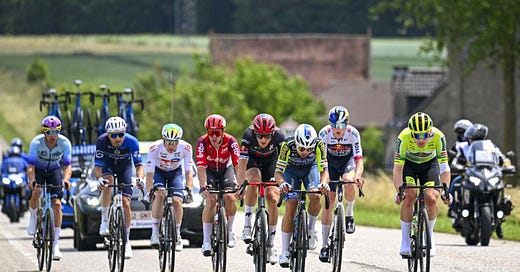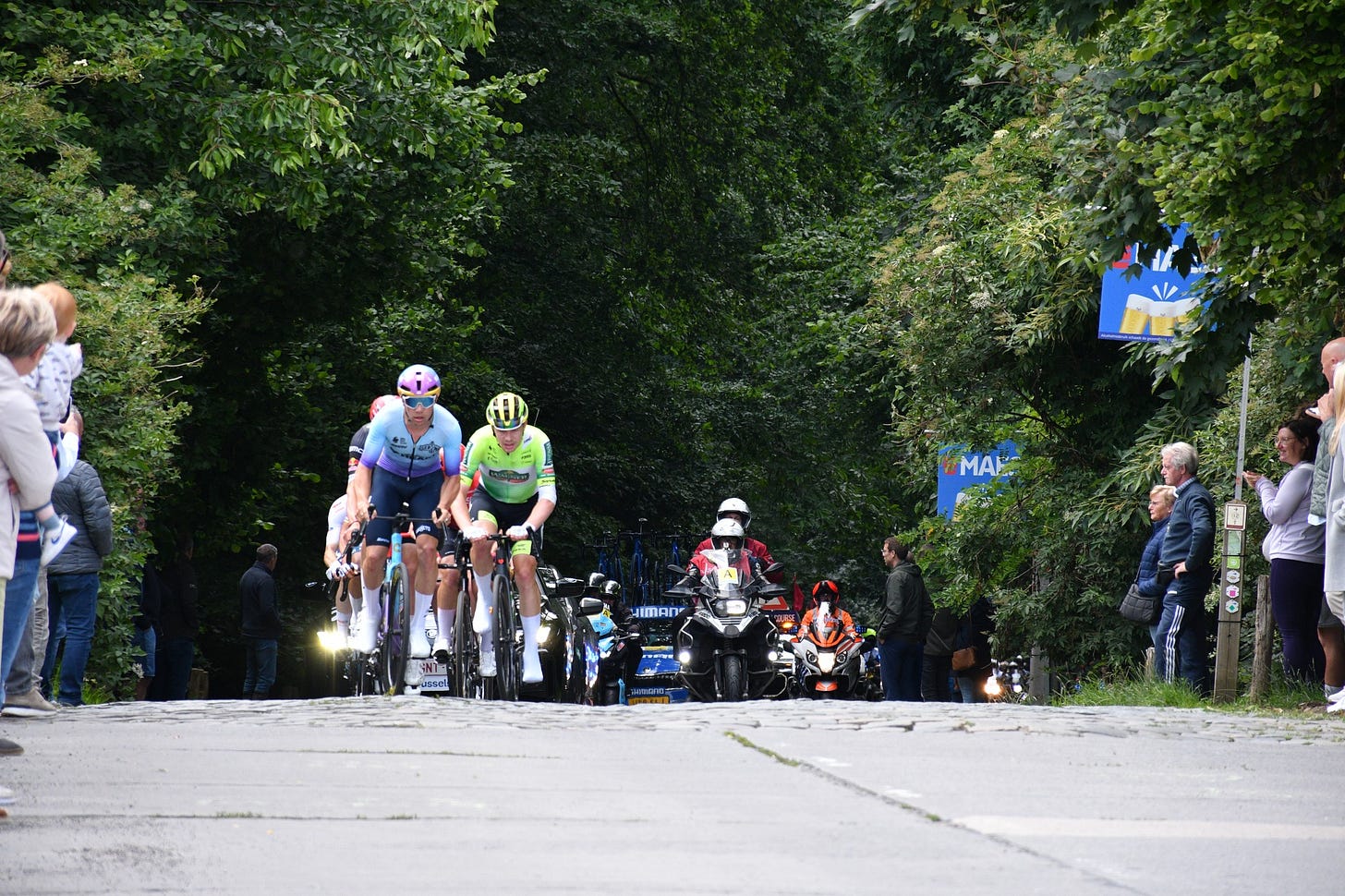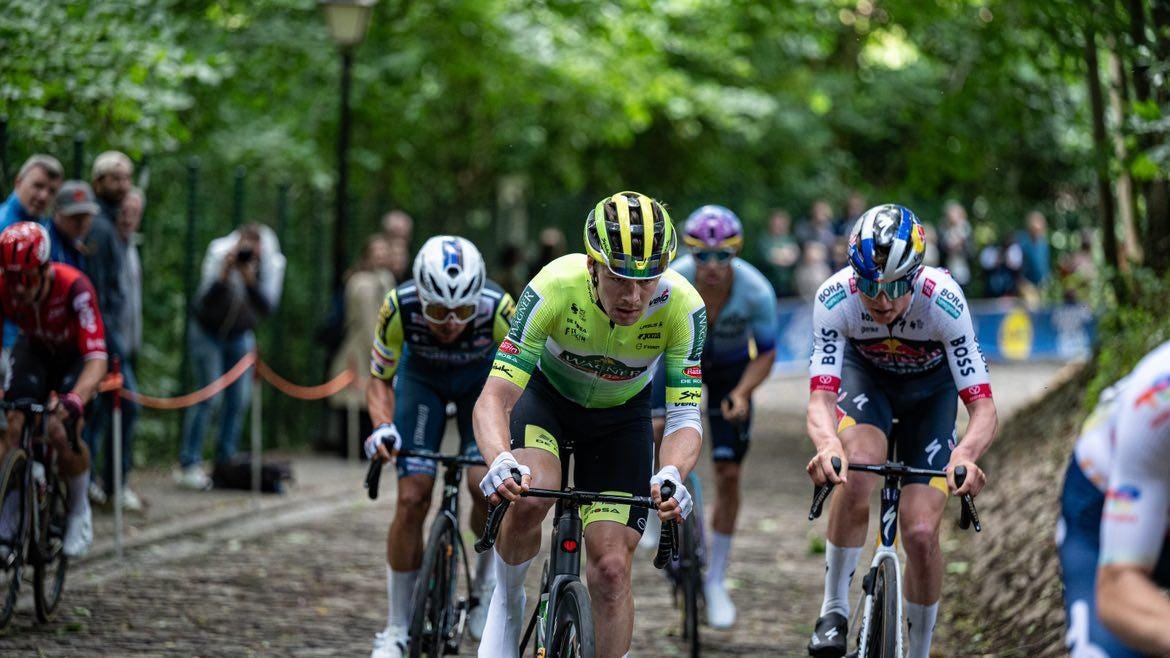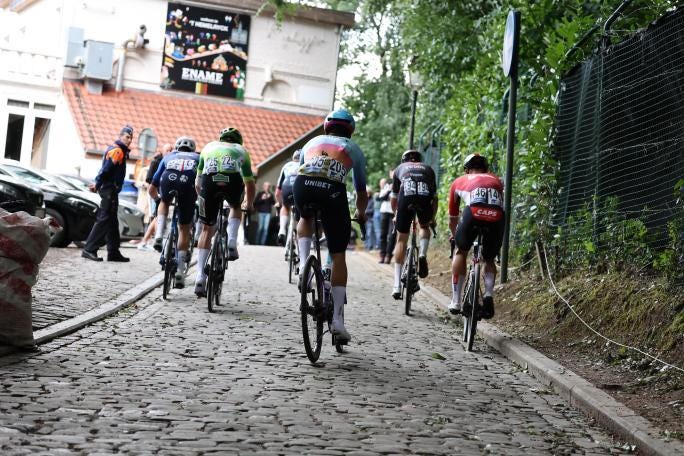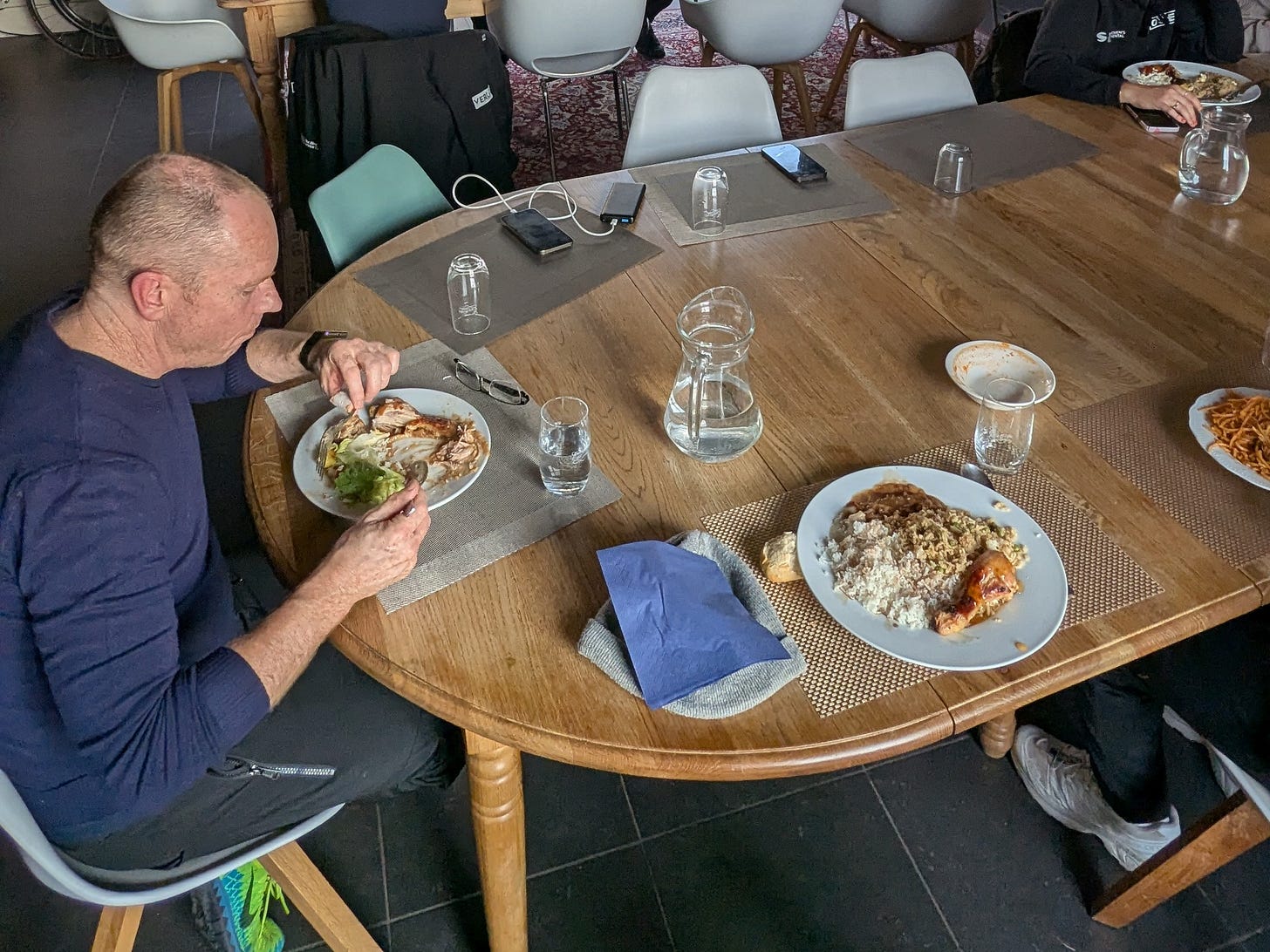l'échapée | Brussels Cycling Classic
When everyone knows the breakaway has the potential to go far in a race like the Brussels Cycling Classic, you’ve got to take it.
The breakaway.
It’s a tricky thing to master. But somehow, I seem to have gone from ignorance of how to make it into the move to catching eighty per cent (four out of five) of the ones I set my sights on. In 2025, I had a go at the breakaway on my very first race day of the year at the Volta Comunitat Valenciana. I wanted to go but had no idea how to manage it. On that occasion, my eagerness got the better of me and I launched out of the catapult. I was not intelligent about how I rode that afternoon, and so my teammate, Quentin Bezza, caught the day's breakaway, countering a move that I made on the highway through La Nucia. Then, over the last two months, I’ve caught the breakaway on days that happen to be arduous and taxing. Days which could help showcase my talents on the bike, in racing tactics, and also in strength to be durable on challenging terrain. On those occasions, my ambitions were well aligned with the team’s requirements for me to appear in splits on these particularly demanding days.
Those days included: Le Classic Grand Besançon Doubs, where I won the Golden Sprint competition after making the break and riding strongly with Vinzent Dorn and Loe Van Belle. On the final day of Franche-Comté Triptyque, Tour du Doubs, I again won the intermediate sprint jersey and eventually the combatif jersey after aggressive, non-stop racing in the first sixty kilometres (even when it had seemed like the break had already departed). That day at the Tour du Doubs, we (Wagner-Bazin-WB) had 2 riders in the break of six to complement the other two Visma-Lease-A-Bike riders present. Henri (mon coequipier) took the KOM jersey that day. Then, prior to this weekend’s attempt, I caught the break on the queen stage of the Quatre Jours de Dunkerque. I made three attacks and caught wind on my final attempt to depart from the peloton to join a strong group of 4 on a particularly windy day in Northern France.
The recent race at the Brussels Cycling Classic was no different. It’s a race with a history, not least with a pedigree of the breakaway going far with a high chance of success, especially when compared to other races on the calendar. I have a distinct memory of the breakaway fighting to the line and winning the race in an attritional edition in 2022. That was when Taco Van Der Hoorne was battling Thimo Willems for the win. So there was enough time for a seed of belief to have been planted—ed. I’ve just caught the breakaway on the Queen Stage of another dot PRO race in the form of the Baloise Belgium Tour
What are the chances? Why go for the break?
For the 105th edition of the race, there were twenty-three teams on the start line, equalling a total of 156 riders setting off from Brussels that morning. At the end of the day, on the other side of Brussels, there will be three riders on the podium and ten listed in the post-race results sheet. With that math, it’s very easy to be invisible in the results sheet, especially when the big boys come out to play.
There is one other option to get your name and team jersey on the screen, and thereby in the minds of the people watching the racing on that Father’s Day. One more strategy for getting a story from the day’s action. That’s the early breakaway. At the very least, it produces watch time for the team’s sponsors to get onto the TV monitor so that, however many thousands of people, can become acquainted and get behind their team. And sometimes, occasionally, on these one-day and short-stage races, you can get a win, or have the chance to fight for it. Just like my teammate, Ceriel Desal, found out in the GP Denain 15 months ago. Other times, there are intermediate sprints and King of the Mountain classifications to fight for, like we did in Tour du Doubs and Quatre Jours de Dunkerque. These secondary options bring in a potential podium appearance and prize monies into the bank account at the end of the day. It's another way to get a good story for our sponsors and be animators for the race.
How did it happen?
So, when everyone knows the breakaway has the potential to go far in a race like the Brussels Cycling Classic, you’ve got to take the chance, even if it’ll be a great challenge. That was my job at hand. Outlined to us in the team camper before consuming our final espresso and pre-race energy bar. Each rider set their role for the day; mine was to go as far into the day as possible with the aim to infiltrate the reduced peloton after the hill zone and use that as an additional boost to carry me to the line.
A quick radio check, check. And I roll to the start to make sure I’m one of the first to line up. Even if I am not aiming at securing my ticket in the day’s échapée, I like to start in the front two rows in the pen. As I said, 156 riders took to the start in a race like the Brussels Cycling Classic, so for me, it pays to at least start on the front foot—every time
It was a long, neutralised roll-out, around eight kilometres through the urban streets of Belgium’s capital. Luckily—though I reckon that I just took my opportunity—I ended up on the Beamer’s bumper of the lead commissaire. This ensured I didn’t have to fight too much, as the car would always create a space to ride into should riders swarm on the left and right as we approached roundabouts and obstacles.
I was calm, partly thanks to Olivier Kaisens, our Directeur Sportif for the day, talking to us on the radio. He was rattling through the first few kilometres of the race as we snaked beneath the surprisingly copious amounts of vegetation on the city's streets. And just as we dropped into a cuvette, he said that the road would turn into narrow technical roads in about one kilometre. Just as the road was appearing in front of us, to match his very words. At that moment, too, when the kilometre ∅ sign appeared, I felt a wind in my sail (the Ursus 67 wheels), just like I had in Dunkerque. I knew then I could catch the break, even if I had to spend a lot of energy to make it happen.
I was not aware of just how technical the first twenty minutes of the race would be. We were moving up and down, side to side, like a roller coaster. It was so much fun. Railing corners, feeling like I had randomly been dropped into a criterium race. The most unlikely of things to expect in this historic Belgian one-day race (because the first edition was way back in 1906). And when I get wind that I’m in a criterium race, my brain and body seem to light up. I’ve grown up watching races like the Tour Series and taking part in events around the country on the most technical short-track racing you can imagine.
So, I raced the first twenty minutes like the final of a criterium. I knew that the elastic would break, eventually. Why? Because when it’s as technical as that, the front ten riders never change. It’s impossible. That is true in a criterium where everyone wants to be at the front. Even more true when ¾ of the peloton doesn’t want to be racing quite yet. Thinking it’s a long day out there, let’s hold back for 45 minutes or so, by just sitting in the wheel. I kept looking back to see that people were in the red, hanging on, whilst I had a moment to breathe after each corner. I kept launching from the second or third wheel, stupid, you might be thinking, but that’s the best way to draw out the guys who want to be in the breakaway.
Sure enough, after twelve kilometres, we were gone with seven guys. And really good guys, as Olivier said on the radio—I find it useful to hear concise, useful information in my ear. Olivier is one of the best at deciphering just what needs to be said at the right moment. When it’s clear information, I can get my head down for the next number of hours whilst remaining focused. Because whilst nothing effectual is going to happen here—we’re in the u of the parabola, we’ve done the first hard portion of racing—now is about conserving for the second set of accelerations towards the back end of the race. I must remain attentive. If I take too much wind, then I run the high risk of tiring myself out far too quickly. If I ride in a staccato fashion, I will burn through my reserves quicker than I’d like. The same is true when sitting in the peloton, just with one hundred and fifty guys instead of the seven others I had with me this time, in Brussels.
Ultimately, that’s why we decided to wait for the eighth rider of the group, simply because eight riders turning into the ferocious headwind would hopefully pay dividends compared to seven. It could allow us to establish a greater gap on the peloton. But, it did not appear so. We were at the whims of the peloton. We hoped they might sleep today. They were sharp this year. They wouldn't make the mistakes of yesteryear. So we ended up fighting with about two minutes for the majority of the headwind before the peloton decided to let it out to three to four minutes as we entered the climbing zone.
Still, it was a good day to put the name of Wagner-Bazin-WB on the screen and associate ourselves with other strong teams on a very taxing day of racing. It showed we were here to play and not be invisible in the race. We were here to fight. I'm proud I gave myself a great chance. But this sport is roulette, sometimes I roll the dice and it goes my way, other times l'envers. And whilst it didn’t pay off today, it shows the level and racing nous is present and functioning to keep giving myself chances to achieve.
Once the peloton had regrouped, shortly after being reeled in on the final lap of the hill zone, I caught my breath and tended to the needs of my teammates. That was grabbing some last-minute bottles from the car and moving them into position for the final technical aspect of the day. My acceleration was finished, and I was running on fumes from a huge day in the break. I knew my chances of competing in the final had evaporated, having been caught earlier than expected, and the fight we had to put up took a lot out of the entire break. We all went into that role. And I think I did it well. Delivering bottles to all of my teammates who were still there and dragging them to the front so they could avoid the chaos of the rear of the peloton.
The cherries on the cake.
I’ve been staying at the Flandrien Hotel in Brakel, once again. It’s turning into one of three homes away from home. And its proximity to Geraardsbergen allowed for some reconnaissance in the days leading up to Sunday’s race. I could familiarise myself with it and get a reminder as to the little nooks and crannies of the cobbles.
'To me, De Kapelmuur is the most picturesque climb in the whole of Flanders, if not Belgium. Every photo taken on those hallowed streets turns into the epitome of iconic. And this time, I had my first ones snapped by a good friend, Jamie Anderson, owner of the Flandrien Hotel. Most of the crew came out to support, which was seriously special. I could hear them cheering, urging me on as I tackled the hardest parts of the climb—the steep ramps which are enclosed by lush green trees. It creates an immense, suspenseful ambience as the race ascends and clatters over the jarring cobblestones. They’re worse there on the ramp after turning right onto the cycle track, and it’s the steepest part of the climb to boot. If you're still wondering, it’s the section synonymous with Rob Hatch’s commendations for any rider who remains seated, despite the assuredly searing pain coursing through their legs. It’s true, we know it’s probably quicker to stay in the saddle, and do everything to be, but at some point, the pain is so much that we decide to dance on the pedals. It’s always faster and more efficient to remain seated on a climb like this, even if I'm inundated with lactate, I try to be seated, knowing I will recover oxygen debt after cresting the climb.'
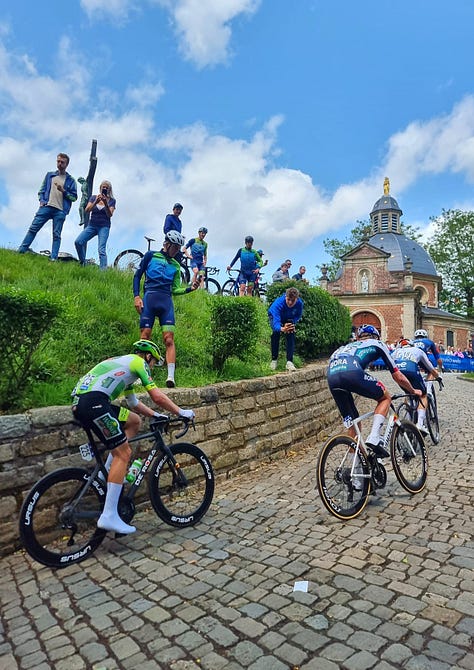
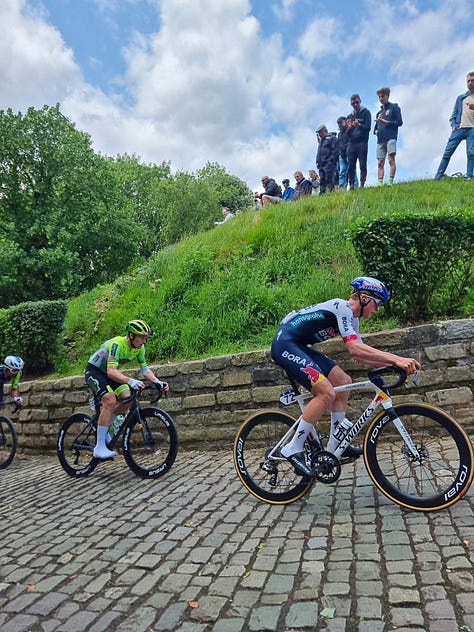
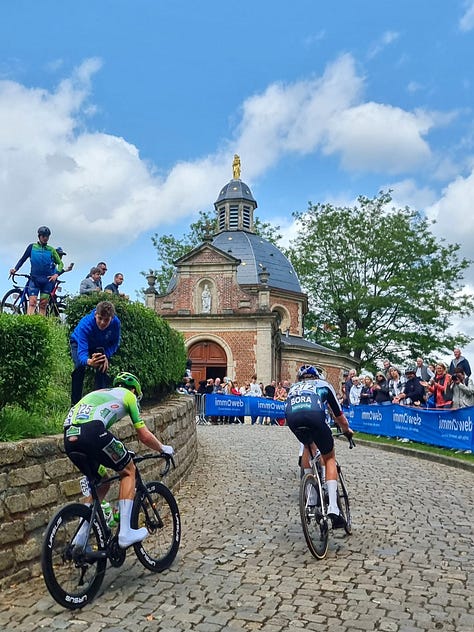
Once over that sector, with the first stone wall to your left, again offering a dramatic backdrop, you come over the crest to meet the second plateau. When passing the café, it’s possible to take a breath and relent. I only lose a metre, but I will gain it back, having had a moment to clear even a smidge of lactate from my system. Everyone, with beers in hand, is enthusiastic. It gives me the energy to dig deep and rally all my muscle fibres to get over the final, notable ramp. The one up to the Kapel. It bends around another wall, with hedges and greenery. People often are clambering over the edge of it, trying to come within millimetres of touching their favourite riders. This is where the best photos are taken. The riders are in a world of pain. My teeth show as I gurn and grunt up the final kicker, with legs full to the brim with lactate. I crest the peak of le bosse and breathe before hitting a sketchy off-camber descent to head towards the Bosberg—another climb I’ll have to go into detail about one day (just keep swimming pedalling).
It's more than a hotel. It is a home of sorts. I've written about that before, though let me unpick my thoughts some more. The people at the flandrien, Tous presque pensée la même. It creates a tight fitting community Of people who think just the same. There's a sparkle in their eyes as they take on these hallowed grounds. Every person's story, gives a particular perspective, a reminder to who you are. There's a dream, we all dream. Endorphins flitting as we sleep Though there is little rest ce soir, All eager to race, race and realise The dream is happening toujours. On race day, there is support when people come together in fits of laughter, and disaster. Whether it be riding high in triumph, Or ebbing low. That's the life of a cyclist, don't we all just know. It's a group of people, shared in passion. Mistakes laid bare, but for all to learn. It's just one of those many, homes away from home.


